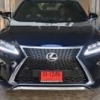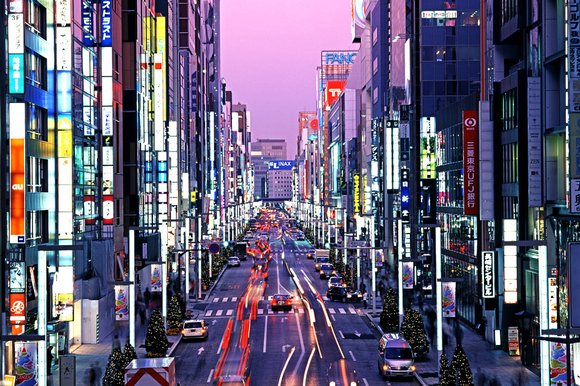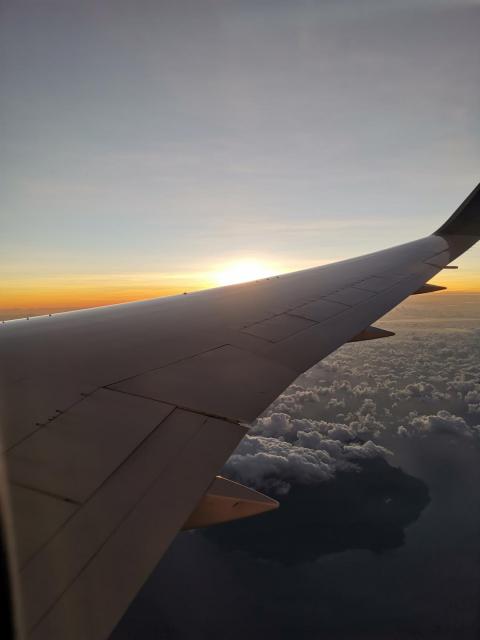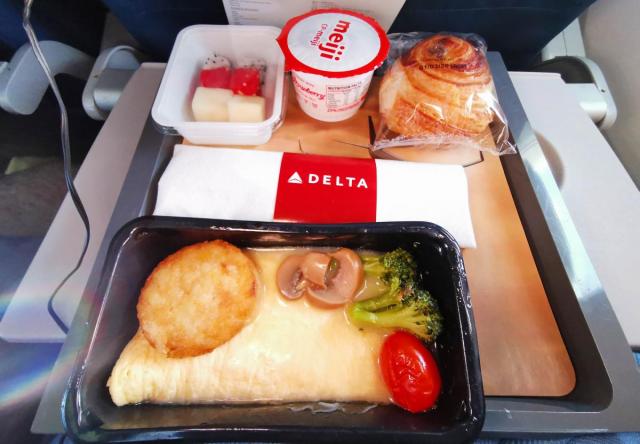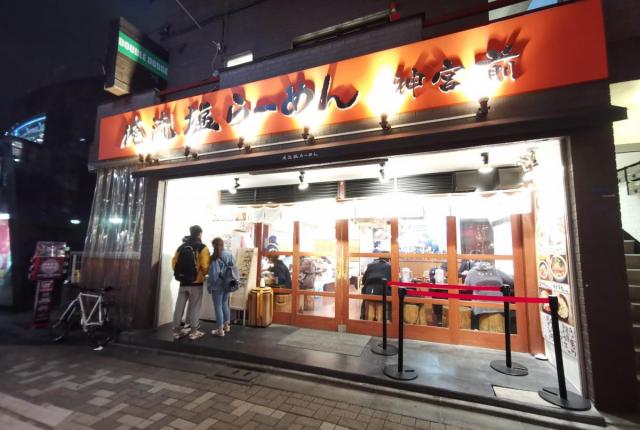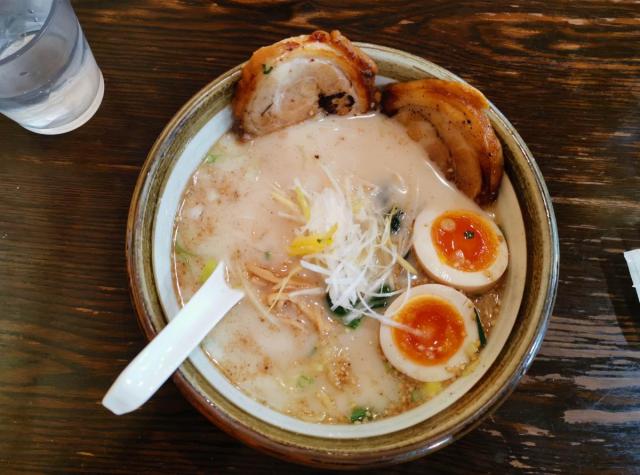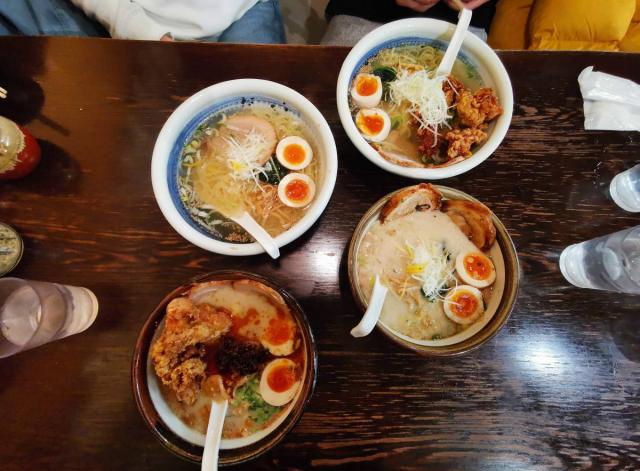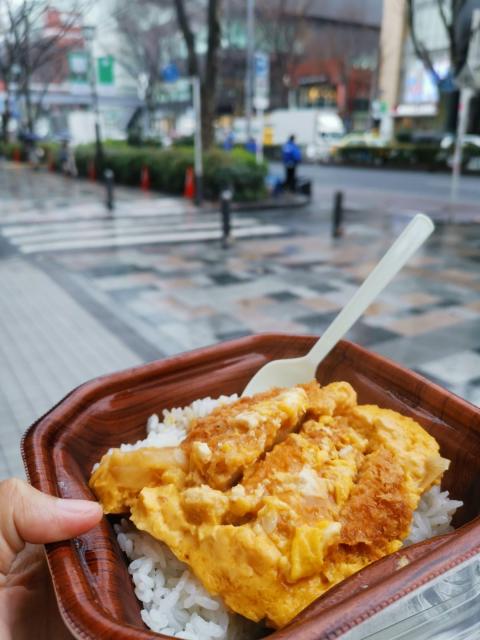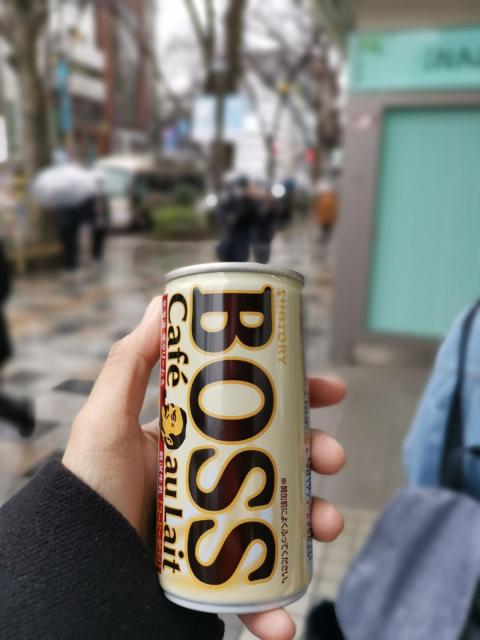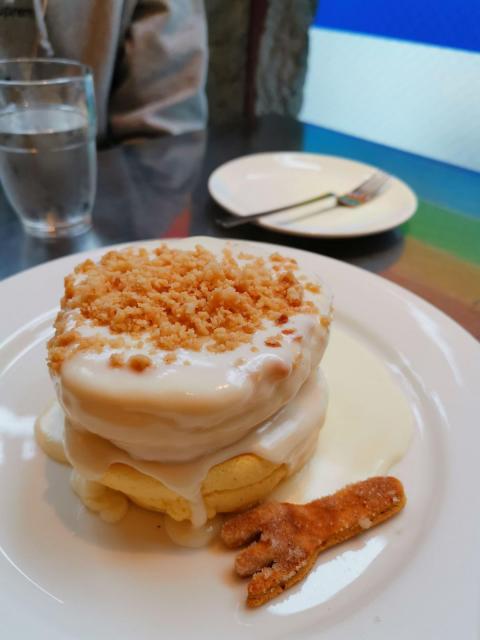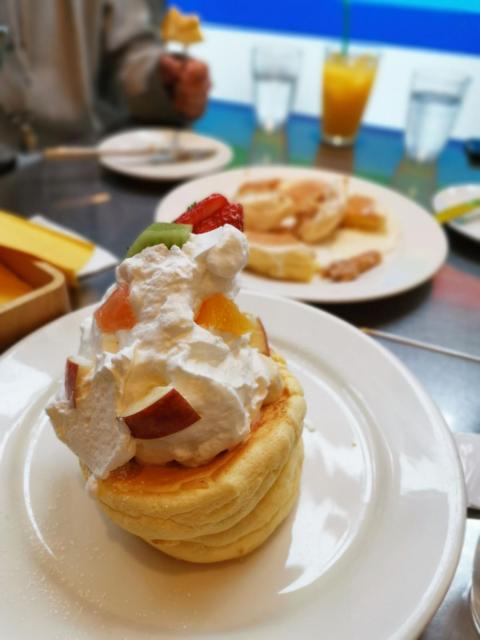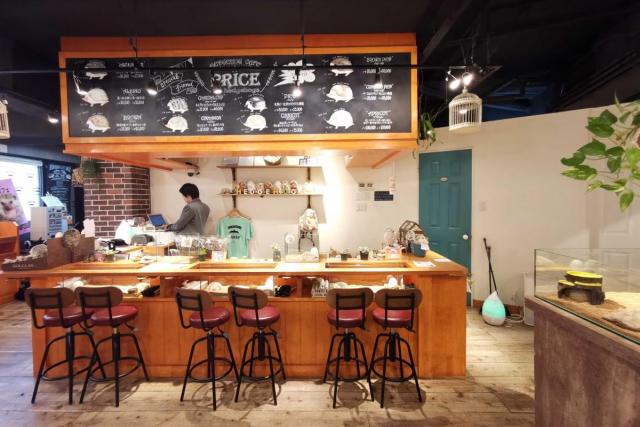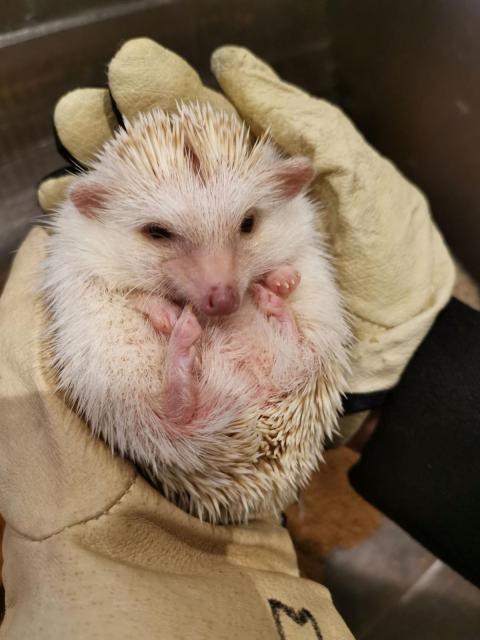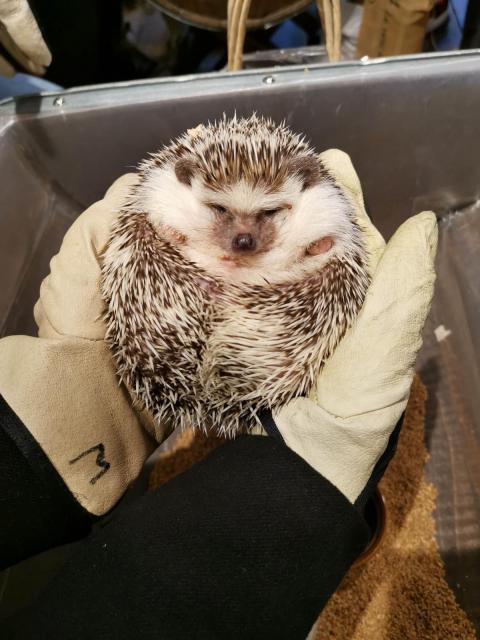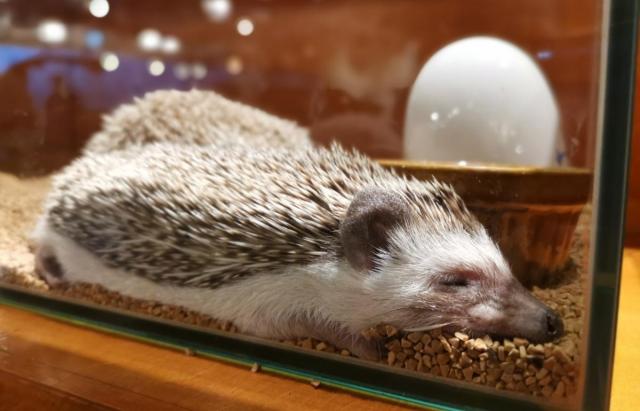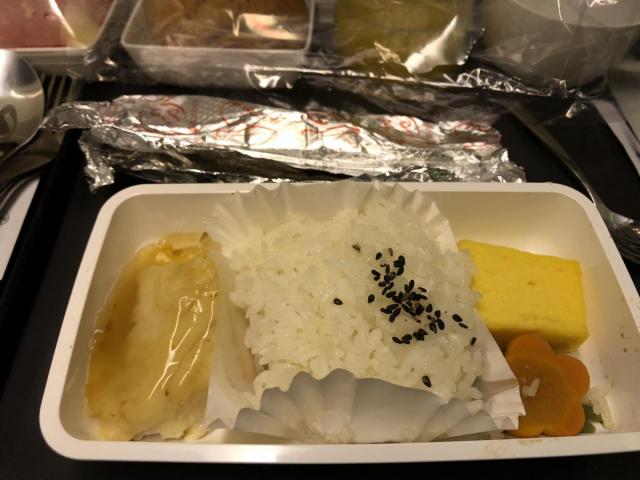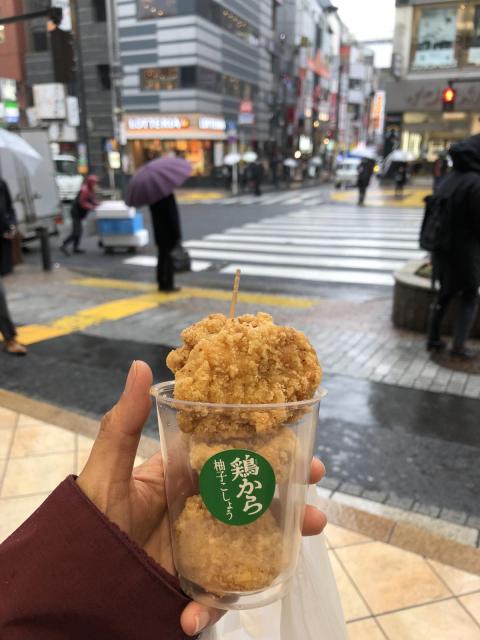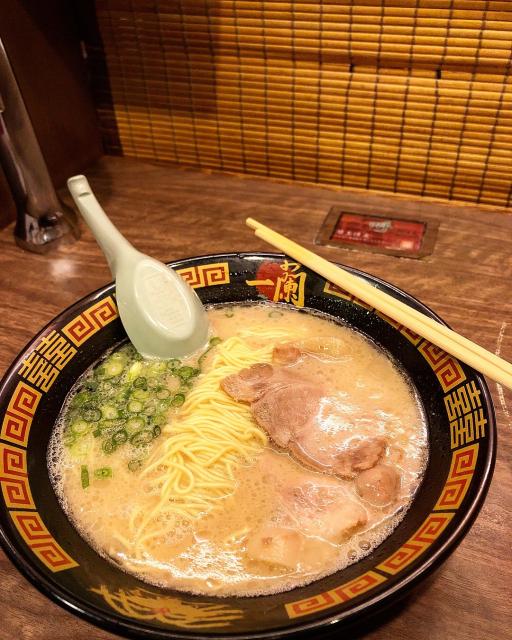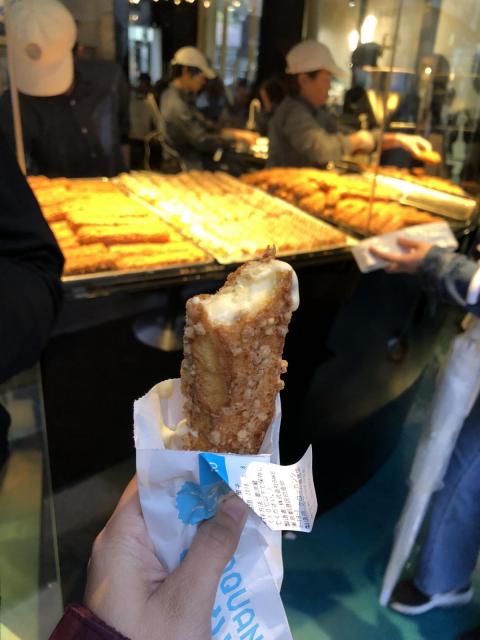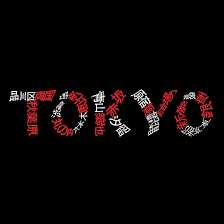Search the Community
Showing results for tags 'tokyo'.
-
Bak in Tokyo once again... Some highlights from yesterday. I expect today to be massively packed. https://vt.tiktok.com/ZSNTGmBY2/
- 17 replies
-
- 8
-

-
- tokyo
- tokyo auto salon
-
(and 1 more)
Tagged with:
-
Now that the year is over, I have finally wrapped up my 2024 reports from 3 different automotive-centric trips to Japan over a year. Tokyo Auto Salon 2024 The return of JDM, the return of the Tokyo Auto Salon. https://carsnkopi.wordpress.com/2024/01/31/tokyo-auto-salon-2024-the-return-of-jdm-the-return-of-the-tokyo-auto-salon/ Highlights from Day 1 https://carsnkopi.wordpress.com/2024/02/01/tokyo-auto-salon-2024-highlights-from-day-1/ Highlights from Day 2 https://carsnkopi.wordpress.com/2024/02/02/tokyo-auto-salon-2024-highlights-from-day-2/ The BMWs of TAS https://carsnkopi.wordpress.com/2024/02/03/tokyo-auto-salon-2024-the-return-of-bmw/ https://carsnkopi.wordpress.com/2024/02/05/tokyo-auto-salon-2024-the-other-bmws-of-tas/ Liberty Walk https://carsnkopi.wordpress.com/2024/02/23/tokyo-auto-salon-2024-liberty-walk/ Madlane Porsche 935ML https://carsnkopi.wordpress.com/2024/02/27/tokyo-auto-salon-2024-kazuki-madlanes-935ml/ DAMD Jimnys https://carsnkopi.wordpress.com/2024/03/02/tokyo-auto-salon-2024-damd-if-you-do/ TOM'S A80 Supra Restomod https://carsnkopi.wordpress.com/2024/03/02/tokyo-auto-salon-2024-the-toms-effect/ NAT's https://carsnkopi.wordpress.com/2024/03/06/tokyo-auto-salon-2024-nats-it-thats-it/ Toyotas of TAS https://carsnkopi.wordpress.com/2024/03/06/tokyo-auto-salon-2024-the-toyotas-of-tas/ 86s https://carsnkopi.wordpress.com/2024/03/10/tokyo-auto-salon-2024-hachiroku-revival/ Nissans of TAS https://carsnkopi.wordpress.com/2024/03/14/tokyo-auto-salon-2024-the-nissans-of-tas/ Mazdas of TAS https://carsnkopi.wordpress.com/2024/03/20/tokyo-auto-salon-2024-the-mazdas-of-tas/ Hondas of TAS https://carsnkopi.wordpress.com/2024/03/22/tokyo-auto-salon-2024-do-you-have-vtec-the-hondas-of-tas/ CeLavi's Renault Maxi Twingo https://carsnkopi.wordpress.com/2024/03/27/tokyo-auto-salon-2024-rage-against-the-mundane-cars-hatanos-celavie-105-maxi-renault-twingo/ Hyundai NPX1 https://carsnkopi.wordpress.com/2024/04/01/tokyo-auto-salon-2024-dialed-up-to-11-the-hyundai-npx1-concept/ Van's, Trucks, MPVs and SUVs https://carsnkopi.wordpress.com/2024/04/04/tokyo-auto-salon-2024-the-vans-trucks-mpvs-and-suvs-of-tas/ Porsche's, Abarts and Europeans marques https://carsnkopi.wordpress.com/2024/04/10/tokyo-auto-salon-2024-porsches-abarths-and-the-other-eurodms-of-tas/ The EVs of TAS https://carsnkopi.wordpress.com/2024/04/11/tokyo-auto-salon-2024-the-evs/ The Oddballs https://carsnkopi.wordpress.com/2024/04/12/tokyo-auto-salon-2024-the-wacky-oddballs/ The Other sights of TAS2024 https://carsnkopi.wordpress.com/2024/04/15/tokyo-auto-salon-2024-the-other-sights-of-tas/ Mooneyes Street Car Nationals 2024 https://carsnkopi.wordpress.com/2024/08/05/riotous-living-the-mooneyes-street-car-nationals-2024-part-1/ https://carsnkopi.wordpress.com/2024/08/07/heavy-hitters-the-mooneyes-street-car-nationals-2024-part-2/ Mooneyes Hotrod Custom Show 2024 https://carsnkopi.wordpress.com/2024/12/12/sneak-peek-shenanigans-set-up-day-at-the-2024-mooneyes-yokohama-hot-rod-custom-show/ The bikes of HCS2024 https://carsnkopi.wordpress.com/2024/12/25/rolling-art-the-bikes-of-the-2024-mooneyes-yokohama-hot-rod-custom-show/ The cars of HCS2024 https://carsnkopi.wordpress.com/2024/12/28/built-to-thrill-the-cars-of-the-2024-mooneyes-yokohama-hot-rod-custom-show/ Everything else at HCS2024 https://carsnkopi.wordpress.com/2024/12/29/everything-else-and-the-cutting-room-floor-wrapping-up-the-2024-mooneyes-yokohama-hot-rod-custom-show/ Dream Drives A Perfect Day, An Incredible Machine, A Dream Fulfilled: Driving the G87 BMW M2 in Japan https://carsnkopi.wordpress.com/2024/02/13/a-perfect-day-an-incredible-machine-a-dream-fulfilled-driving-the-g87-bmw-m2-in-japan/ Euphoric High: Daikoku and the Wangan in a G87 BMW M2 https://carsnkopi.wordpress.com/2024/02/17/a-euphoric-high-daikoku-and-the-wangan-in-a-g87-bmw-m2/ A Dream Revisited: Driving the G81 BMW M3 Touring Competition in Japan https://carsnkopi.wordpress.com/2024/06/23/a-dream-revisited-driving-the-g81-bmw-m3-touring-competition-in-japan/ https://carsnkopi.wordpress.com/2024/06/29/a-dream-revisited-the-cutting-room-floor/ Porsche Experience Centre Tokyo https://carsnkopi.wordpress.com/2024/04/24/tokyo-auto-otaku-2024-porsche-experience-centre-tokyo/ Fuji Motorsports Museum https://carsnkopi.wordpress.com/2024/08/08/legacy-of-speed-visiting-the-fuji-motorsports-museum/ Toyota Commemorative Museum of Industry and Technology https://carsnkopi.wordpress.com/2024/10/24/nagoya-auto-otaku-2024-visiting-the-toyota-commemorative-museum-of-industry-and-technology/ Toyota Automobile Museum https://carsnkopi.wordpress.com/2024/10/31/nagoya-auto-otaku-2024-visiting-the-toyota-automobile-museum/ Nissan Global HQ https://carsnkopi.wordpress.com/2024/11/10/yokohama-auto-otaku-2024-visiting-the-nissan-global-headquarters-gallery/ Bingo Sports https://carsnkopi.wordpress.com/2024/12/17/tokyo-auto-otaku-2024-bingo-sports-and-daniel-arshams-porsche-356-speedster-bonsai/ https://carsnkopi.wordpress.com/2024/12/18/tokyo-auto-otaku-2024-italian-dreaming-at-bingo-sports/ https://carsnkopi.wordpress.com/2024/12/19/tokyo-auto-otaku-2024-beyond-the-spotlight-at-bingo-sports/ Other Tokyo Automotive locales Crank https://carsnkopi.wordpress.com/2024/04/29/tokyo-auto-otaku-2024-revisiting-crank-tokyo/ Book Garage https://carsnkopi.wordpress.com/2024/04/30/tokyo-auto-otaku-2024-the-book-garage/ Flip Flip Coffee Supply and Le Garage https://carsnkopi.wordpress.com/2024/10/19/tokyo-auto-otaku-2024-flip-flip-coffee-supply-and-le-garage/ Studie Yokohama https://carsnkopi.wordpress.com/2024/12/14/bavarian-pitstop-revisiting-studie-yokohama/ Car Spotting https://carsnkopi.wordpress.com/2025/01/03/japan-auto-otaku-2024-a-year-of-street-spots/ Om nom noms https://carsnkopi.wordpress.com/2024/05/03/tokyo-料理-otaku-2024-the-foodie-roundup/ Ending off https://carsnkopi.wordpress.com/2024/11/22/lets-go-fighting-love-my-japan-adventures-ahead/
-
Punching through the six-speed in a San Remo Green metallic Z4 as I chased the rising sunlight into the horizon, A cool spring breeze swirled around me, carrying the sweet scent of Sakura blooms. The vibrant pink flowers blurred past, their beauty momentarily overshadowed by the sound of my Z4’s B58 as it crackles and thunders on the overrun as I powered into another cog. It was the perfect scene—a fitting farewell to BMW’s venerable Zukunft roadster as it heads towards the end of its production run. Alas, as I sliced through the rain-soaked roads and ascended into the thick, fog-covered summit of Hakone, that perfect scene was not to be. But once again, I’m getting ahead of myself, so let’s hit the rewind button once again. Earlier this year, I had the incredible opportunity to navigate the mountainous Touge roads of Hakone and the mesmerising stretches of the Wangan in Tokyo. It wasn’t just a memorable drive; it marked the realisation of a dream that began over two decades ago when I first set foot in Japan. And as we all know, the best of dreams deserve a revisit, so with another trip to Tokyo lined up towards the tail-end of Spring, it was time to set things into motion. The Plan While my first run through the roads of Hakone in January was exhilarating, it was also an intense journey that began and ended in Tokyo on the same day, leaving my body battered and exhausted by nightfall. The tight schedule allowed little time to savour the sights as I blitzed through each checkpoint, aiming to cover as much ground as possible before daylight faded. This time, however, while I planned to revisit and dive even deeper into the beautiful driving roads of Hakone, I also added a night in nearby Gotemba, allowing for a slightly more relaxed drive and the opportunity to explore the magnificent vista and surroundings of Mt. Fuji before making the return journey back into Tokyo, with a brief stop in Yokohama. The Car As you might have ascertained from the title and pictures, I didn’t get the Z4. It wasn’t for the lack of trying though because as it turned out, the Z4 Manual was not destined for Japan. At least, not officially. Instead, I found myself behind the wheel of something at the opposite end of BMW’s performance spectrum: Their ultimate touring machine. In place of a gorgeous and compact, 2-seater drop-top Handschalter Z4 M40i roadster with its 335 horsepower, I was about to push the starter button in BMW’s formidable 503-horsepower M3 xDrive Competition Touring, an ex-show car with every single M Performance option ticked off. It had quite the presence. Yes, the entire M Performance catalogue for the G81 is here, boasting handmade carbon fibre body parts and panels both inside and out, an M Performance Coilover suspension setup, 20 and 21-inch M Performance forged wheels, a multitude of M Performance enhanced interior trim accents, and their bombastic M Performance titanium exhaust system with quad pipes exiting through a central position. Needless to say, fitting these additional goodies would significantly alter one’s final purchase price—I didn’t dare ask. Departure Tokyo With my luggage stowed in the cavernous boot (hot tip: never load luggage into an M3 equipped with an M Performance exhaust with the engine running), it was time to once again navigate out of the city and head towards Hakone. This time, however, the skies were grey and ominous, signalling what was to become the start of a very wet but very memorable day. As I powered out of the metropolis, the M Performance Coilovers immediately made their presence known. Despite Tokyo’s typically smooth highways, the M3 Touring’s suspension was so responsive that every imperfection and painted road marking sent a distinct sensation through the chassis. Accelerating slightly improved the ride as it smoothed out the minor bumps, but it also heightened the car’s spirited nature, subtly encouraging me to push the accelerator deeper into the carpet at the expense of my license. Such is the nature of M. Dancing the very fine line between smooth progress and possibly breaking the law, the light drizzle that had been showering Tokyo’s skyscrapers escalated into a full-blown thunderstorm as I pressed on southwards the legendary Hakone Turnpike. The Highs of Hakone and the Izu Skyline Turning off the highway, the heavy downpour finally subsided, giving me a moment of calm as I headed toward the Hakone Turnpike. This famous toll road in Japan is a favourite among drivers. It stretches about 15.7 kilometres (9.8 miles), beginning in Odawara and climbing into the Hakone mountain range. The road, which reaches elevations around 1,000 meters (3,281 feet) above sea level, offers a thrilling drive with sharp hairpin turns, sweeping curves, and long straights. Today, this illustrious road is wet, and with a 503-horsepower, 650 Nm twin-turbocharged engine under my right foot, I felt a mix of excitement, hesitation and trepidation as I charged up the hill. As my brief respite from the rain ended and the JDM heavens opened up once again, the M3 stayed firmly planted and always a step ahead of my intentions. The massive tires spewed water out their sides, clawing for any grip the damp surface could offer. As I pressed the accelerator deeper, the M3 unleashed a ferocious surge of power. My heart pounded in sync with the rhythm of the elevated road’s expansion joints, yet the M3 tore forward with uncanny confidence, undeterred by the relentless downpour. [/img] Even as I pushed into the wide, expansive bends of the Turnpike, the M3 tracked its line with unwavering accuracy. As the rear hinted at slip, the front end swiftly hooked up, pulling me out of each corner with surefooted traction. Powering up the rain-soaked roads of the turnpike, xDrive worked its magic seamlessly, and as the corners tightened further up the Hillclimb, the M3 delivered a confidence-inspiring drive with every turn of the wheel, urging me to push harder and deeper, even as the surfaces got wetter as I ascended the peak. Despite its 1,825 kilograms, the M3 blitzed straights and carved through corners with such agility that its published weight felt inconsequential. As I finally let off at the end of the final straight, my mouth was dry, my hands were buzzing, and my mind was still trying to comprehend just how eye-wateringly capable and ruthlessly the M3 Competition Touring had taken on the Turnpike, even in the rain. It was an exhilarating experience, and now, I needed a moment to calm down. After finishing up my lunch (Katsu curry is fab here), it was time to strap in once again for the Izu Skyline. As you can see from the pictures, it was evident that while the rain had stopped, a thick fog had settled over the rugged mountainous terrain, shrouding the scenery in an eerie silence, a silence that was about to be broken with a rapturous bark of a BMW S58 coming back into life. "Bwar!!!" With adrenaline still coursing through me, I set my sights and GPS on the Izu Skyline. Unlike the Hakone Turnpike’s fast, dynamic straights and sweeping curves, the Izu Skyline stretches approximately 40 kilometres through the lush Izu Peninsula. It is renowned for its narrow, tight technical curves and breathtaking vistas of the Pacific Ocean. When it’s not shrouded in thick fog, that is. Today, the rain and misty clouds have transformed the serene landscape into a mysterious, almost otherworldly landscape for the M3 Competition Touring to explore and experience. Even on the Izu Skyline’s challenging road surfaces and tight bends, the Competition Touring excels, delivering scintillating performance and steadfast ground-covering ability that instils confidence with each corner. It dives into turns and accelerates out with enthusiastic abandon, punctuated by a crackle of thunderous pops with every downshift, urging you to continue pushing further and faster in the pursuit of sheer driving pleasure. While I was certain the car did most of the work keeping me planted in these slippery conditions, the engagement I felt behind the wheel was palpable. Every input elicited a precise response, enhancing my connection with both the machine and the road. It was a truly joyful experience, and one to be savoured for the full 40 kilometres. Spirited Away While the first day of driving delivered utmost joy even on one of the wettest days of Spring, what lay ahead of me as I dragged myself out of bed at the ungodly hour of 4:30am was a drive that promised an even greater state of driving bliss. After the previous day’s grim weather obscured the beautiful surroundings, a brief look at day two’s weather forecast revealed a fleeting opportunity in the early morning to witness Fujinomiya in all its magnificent splendour. With sleep taking a backseat, I fired up the M3 for a brisk morning drive through the mountain roads of Fujikawaguchiko. But first, a quick coffee and to take that photo. No, I’m not sorry for it. It was 530am, there was no one else around and it was just too beautiful to not take the shot. Charging up a narrow Touge mountain road, the M3 Competition Touring, which had already performed exceptionally well in the rain, now revealed an even more ferocious demeanour on dry roads. It pulled and gripped even harder as it roared up into the mountains with increased tenacity, eagerly wanting to be unleashed. With all four paws charging uphill through a series of rapid directional changes—left, right, left, right—the M3 Competition Touring continued to power and howl. Finally, the dense curtain of trees parted, unveiling one of the most breathtaking views I’ve ever experienced in the land of the rising sun and my jaw hit the ground. This was what I woke up for. It was beyond words and a sight that will stay with me for a long time. Nestled at the summit of this touge is Tenka Chaya 天下茶屋, translated, it means tea house under the heavens and I think you can understand why they chose this name. Beyond this heavenly teahouse, the road winds its way back downhill towards ground level. Like the ascent, it boasts an endless sequence of winding, flowing curves and tight hairpin corners—a playground perfectly tailored for the M3. With each bend, the car showcased its exceptional handling, flawlessly manoeuvring through every twist and turn. The M Performance exhaust crackled and thundered as the M3 surged through the gears, with the S58 powerplant applying ample engine braking to temper our “enthusiastic” velocities. I was addicted. A Dream Reimagined As my time with the M3 drew to a close and Tokyo’s iconic skyline began to loom in the distance, I found myself reluctantly easing off the accelerator, not wanting to let go of the exhilaration that had defined every twist and turn. The M3 had been more than just a car; it had become a conduit for emotions—each roar of its engine, each precise cornering manoeuvre resonated deeply within. In those moments, whether powering up the Hakone Turnpike, navigating the intricate bends of the Izu Skyline or powering hard into the Wangan, the M3 had transcended mere machinery. It had become a partner in an unforgettable journey, amplifying the thrill of speed with a symphony of exhaust notes and the tactile feedback of its steering wheel. As I parked the M3, its engine ticking softly as it cooled, a wave of gratitude swept over me. This experience wasn’t just about driving; it was about connecting with the essence of automotive passion. With a lingering sense of fulfilment and, nostalgia, I knew this journey would remain etched in my memory—a tribute to the enduring allure of the open road and the inseparable bond forged between driver and machine. It wasn’t just a dream revisited; it was a dream reimagined. What a drive, what a car. Truly, the ultimate driving machine and BMW at their finest. * Big thanks once again to BMW Japan for the kind loan of their press car.
-
Link: https://carsnkopi.wordpress.com/2024/04/24/tokyo-auto-otaku-2024-porsche-experience-centre-tokyo/ For Porsche enthusiasts, petrolheads, and driving enthusiasts seeking automotive excitement in Tokyo, Japan (safely and under controlled conditions), the Porsche Experience Centre just outside the bustling metropolis might offer the perfect solution for a thrilling morning or afternoon outing. The 43-hectare facility, opened in 2021, is the ninth Porsche Experience Centre globally and offers visitors the chance to discover Porsche vehicles in various controlled conditions, some of which are unique compared to other PEC courses worldwide. And because yours truly was in Tokyo, I was given the chance to drop and have a taste. Getting to and from PEC Tokyo, situated just outside the city centre, is most conveniently done by car. Public transportation options are limited and can be time-consuming. Opting to drive also presents the opportunity to experience the Tokyo Wan Aqua-Line Expressway and visit the picturesque Umihotaru rest area along the way. From Umihotaru, PEC Tokyo is only a short drive away and soon, you’ll be greeted with PEC Tokyo’s exterior that features an Edo Kiriko cut glass design motif, as well as a collection of fine Stuttgart machinery awaiting their drivers. Let’s head inside. Seeking refuge from the winter chill (or summer heat, depending on the time of your visit) within the cozy confines of PEC allows you to enjoy amenities such as a café, a restaurant, and a PEC Tokyo shop stocked with plenty of goodies. Additionally, there’s a simulation lab where you can embark on virtual outings to various circuits around the world, piloting a myriad of machines from Porsche’s illustrious past and present. But of course, the first thing you’d see once you head through the front door is a curated display of P-cars. On my visit, there was a custom-painted Taycan (by American painter Kaves), a stunning Cayman featuring 906 Colours, a vintage 911 and even their 919 Hybrid LMP racing car. | Since my driving session was scheduled for later in the day, I popped into the simulation lab for a quick session before heading to Restaurant 906. While it may not rival Restaurant Christophorus in Stuttgart, it certainly holds its own. However, with a view of the entire circuit calling for attention, one can’t help but feel the excitement building as I hastily downed my lunch, albeit it with a tinge of guilt knowing how much effort went into preparing each dish. With lunch done, it was time to hit the track. PEC Tokyo offers a full range of courses varying in intensity for all driver skill levels across a portfolio of cars. The list of cars available is as extensive as it is impressive. You can choose from a Macan S, Macan GTS, 718 Boxster, 718 Cayman GTS, 4.0 718 Cayman GT4, 718 Cayman GT4 RS, Panamera GTS, Taycan 4S, Taycan GTS, Taycan Turbo, Taycan Turbo S, 911 Carrera, 911 Carrera S, 911 Carrera 4S, 911 Carrera GTS, 911 Turbo S, 911 GT3 and the 911 GT3 RS. A specially prepared Cayenne is also available for off-road trails for those who prefer going off the beaten path. For enthusiasts seeking a broader experience, programs are available to sample multiple cars in a single session, allowing for both car-to-car comparisons and exploration of drivetrain variances. For my 90-minute drive, my steed of choice (or rather, chosen for me) was a beautiful red 911 Carrera GTS. While 90 minutes may seem limited, with a dedicated instructor providing one-to-one coaching, it’s ample time to fully explore the capabilities and boundaries of the cars. At PEC Tokyo, various driving experiences are available, including practising launch control, slalom driving, full braking, an area for emergency manoeuvres with a kick plate to send your car sideways in either direction and even a wet low-friction handling oval for drifting sessions. Unlike other driving centres I’ve visited in other locales, PEC Tokyo uniquely offers these experiences buffet-style. There’s no set schedule to adhere to, giving participants the freedom to pick and choose what they’d like to do at any given time. Of course, if it gets crowded, some waiting time would be involved, but if you manage to drop by during a relatively quiet period (like me), you’ll pretty much have the entire facility to yourself. As one might expect, I spent a big chunk of my time drifting (or rather, attempting to drift) the 911. Unlike the BMWs I’m more accustomed to, I discovered that balancing a 911 in a sustained sideways drift is a much more engaging process, one where the fine line bordering control and spinning out is much more delicate with very little room for error. Featuring numerous elevation changes and iconic corners borrowed from renowned circuits worldwide, such as the Carousel from the Nürburgring and the Corkscrew from Laguna Seca, the track offers an exhilarating driving experience. I found myself spending the majority of my time here, enjoying countless laps with the GTS effortlessly soaking up every corner. So much so that I actually ended my session early as the physical strain began to take its toll. As the sun began its descent, casting a beautiful glow over the premises, I couldn’t help but feel exhausted yet fulfilled. Saying goodbye to my encouraging instructor, I embarked on my journey back to central Tokyo, reflecting on the afternoon well spent.
- 10 replies
-
- 11
-

-
Tokyo 2020's Hashimoto rules out Games postponement -report The president of the Tokyo 2020 organising committee ruled out a cancellation or another postponement of the Olympic Games in an interview with Nikkan Sports newspaper, amid concerns about hosting the event during a global pandemic. https://www.channelnewsasia.com/news/sport/tokyo-2020-s-hashimoto-rules-out-games-postponement--report-14937370
- 1,022 replies
-
- abe
- tokyo olympics
- (and 4 more)
-
https://asia.nikkei.com/Spotlight/Tokyo-2020-Olympics/Composer-for-Japan-s-Olympic-opening-ceremony-resigns?utm_campaign=GL_JP_update&utm_medium=email&utm_source=NA_newsletter&utm_content=article_link&del_type=4&pub_date=20210720090000&seq_num=5&si=44594 Composer for Japan's Olympic opening ceremony resigns Keigo Oyamada admitted in old interviews to bullying disabled classmates Keigo Oyamada, the composer for next week's Olympic opening ceremony in Tokyo, has resigned after his admission to bullying disabled classmates resurfaced. © Getty Images Nikkei staff writersJuly 19, 2021 21:28 JSTUpdated on July 20, 2021 09:22 JST TOKYO -- Keigo Oyamada, composer for the Olympic opening ceremony in Tokyo, resigned Monday following his admission that he had bullied classmates with disabilities in the past. Oyamada recently came under fire after past magazine interviews -- one in 1994 and another in 1995 -- came to light. In the interviews, he talked about having bullied his classmates with disabilities without showing any remorse. The Tokyo 2020 Organizing Committee said it will remove Oyamada's music from the opening ceremony and is now searching for a replacement. He had written music for about four minutes of the ceremony. Chief Cabinet Secretary Katsunobu Kato, Japan's top spokesman, said earlier in the day that the issue needs to be dealt with appropriately by the Japanese Olympic organizing committee. "The government is working toward a society of coexistence," Kato said, adding that Oyamada's behavior should not be tolerated. Oyamada released a statement on his twitter account disclosing his resignation. In the statement, he said he has offered his resignation and that it had been inappropriate for him to accept the committee's invitation to compose the music for the opening ceremony. Oyamada first debuted in 1989 as part of the rock band Flipper's Guitar. He later went solo, adopting the stage name Cornelius. The recently resurfaced interviews were published in 1994 and 1995. © Kyodo The Tokyo 2020 Organizing Committee announced last Wednesday that Oyamada would be part of the creative team responsible for producing the opening and closing ceremonies of the Games. The old interviews resurfaced, prompting Oyamada on Friday to acknowledge bullying his classmates. Although Oyamada issued an apology, the firestorm of criticism continued. American broadcaster NBC, whose parent company owns the broadcasting rights to the Olympic Games, published a story on the musician over the weekend that included a critical tweet. "How can a person who committed such discriminatory and violent acts considered qualified for getting involved in Olympic and Paralympic Games?" wrote the person who posted the tweet. An Associated Press article also touched on the social media reaction. The piece quotes an essay by Takayuki Fujimoto, professor of media studies at Toyo University, who argued that Oyamada should step down because his bullying violates the Olympic principles of human rights and diversity. Toshiro Muto, CEO of the organizing committee, told reporters late Monday that he deeply regrets how the body has kept Oyamada on board after the interviews surfaced anew. "That decision was insufficient," Muto said. The organizing committee had not indicated plans to dismiss Oyamada, expressing a willingness to let him "continue his work on preparations." But in a statement released late Monday, it said that "we have come to believe that this decision was wrong, and we have decided to accept his resignation." The Tokyo Olympics were previously marred by scandal when Yoshiro Mori, former president of the organizing committee, left his post after his sexist remarks sparked a backlash.
-
Tokyo 2020 Olympics Using Cardboard Beds for Althetes source: https://hypebeast.com/2020/1/tokyo-2020-olympics-paralympics-cardboard-beds-althetes-recycled With the 2020 Olympic and Paralympic Games coming up this summer, host city Tokyo has just unveiled recycled cardboard beds that the althetes will be sleeping on. The bed frames have been crafted from recyclable cardboard, while the mattresses for the beds will be formed of polyethylene materials that will be reused for plastic products after the events. The beds will be 2.10 metres long and the manufacturers say they will be able to support a weight of about 200kg, which is more than any athlete weighed at the 2016 Olympics in Rio. 18,000 beds will be needed for the Olympics, and 8,000 for the Paralympics. Following the games, the mattresses will be recycled into plastics. The environmentally conscious sleeping arrangements were put on display for the media for the first time on Thursday at a mock apartment in the Tokyo 2020 headquarters. The apartment units, located in Tokyo Bay, will then be sold privately following the games, with prices starting at around ¥50 million JPY (approximately $456,000 USD). Check it out above. In addition to the cardboard beds, the 2020 Tokyo Olympic medals have also been fashioned entirely out of recycled consumer devices, while the Olympic torch is made from aluminium waste and the podiums from recycled household and marine plastic waste. Even the electricity used during the event will come from renewable sources. With people all over the world pushing for more sustainable efforts, the 2020 Tokyo Olympicslooks to be starting off on the right foot. The TokyoOlympics take place between July 24 and August 9 2020 and the Paralympics from August 25 to September 6.
-
Recommendations, suggestions, from accommodation to attractions to food, travel tips etc... The list goes on! I've filled up some information which I've picked up here and there. 1. Where to stay Shibuya / Shinjuku (Recommendations for affordable + clean hotels? I am also considering Airbnb again after my last two satisfied experience from my GC trip) 2. Places of interest / attractions Mount Fuji, Tokyo Tower, Sensōji Shrine (浅草寺), Tokyo Disneyland/DisneySea, Ikebukuro, Meiji-Jingu Shrine, Cherry Blossom Festivals (Ueno Onshi Park, Asukayama Park, the Meguro River, Chidorigafuchi, Sumida River bank) 3. Shopping Centers / Night markets Shibuya 109 & Shibuya Crossing 4. Transportation 5. Cafe / Restaurants Cat Café Nekorobi 6. MUST BUY souvenirs / local food Tokyo banana, amulets 7. Travel tips Thank you in advance.
- 164 replies
-
Just sharing some Winter adventures. To be updated as I go along Part 1: https://garage36.wordpress.com/2020/03/03/japan-2020-winter-adventures/ Part 2: https://garage36.wordpress.com/2020/03/05/japan-2020-niseko-dreaming/
- 35 replies
-
- 16
-

-
https://asia.nikkei.com/Life-Arts/In-Tokyo-public-toilets-are-works-of-art?utm_campaign=RN Subscriber newsletter&utm_medium=JP update newsletter&utm_source=NAR Newsletter&utm_content=article link&del_type=4&pub_date=20200910090000&seq_num=19&si=44594 In Tokyo, public toilets are works of art World-class architects design uniquely shaped and see-through park restrooms This public restroom in Tokyo's Jingudori Parkw was designed by world-class architect Tadao Ando. (Photo by Seiya Tsuji) Nikkei staff writersSeptember 10, 2020 06:22 JST TOKYO -- A project to transform public toilets in Tokyo's Shibuya district into art saw its latest addition this week, when one designed by Pritzker Prize-winning architect Tadao Ando opened in Jingudori Park. The prominent, umbrella-like eaves capping the structure inspired its name Amayadori, or "shelter from the rain." The latticework is designed to let wind and light pass through seamlessly. This is the seventh design completed in Shibuya under the Tokyo Toilet project run by the Nippon Foundation. Sixteen internationally renowned creators are participating in the initiative. The idea is that the beauty of the structure would encourage visitors to be clean when doing their thing. With an army of professional inspectors making frequent visits to ensure the best user experience, the planners hope to change the image of public restrooms as dark, dirty, smelly and scary. The first restroom, completed in August, came from another Pritzker-Prize winner -- Shigeru Ban. Located in Yoyogi Fukamachi Mini Park, the yellow, red and purple stalls have a transparent facade when open. But once the door is locked from the inside, the walls become opaque to provide privacy. Visitors try out transparent public toilets that become opaque when occupied, designed by Japanese architect Shigeru Ban, at Yoyogi Fukamachi Mini Park in Tokyo. © Reuters "There are two things we worry about when entering a public restroom, especially those located at a park," Ban explained on the project's website. "The first is cleanliness, and the second is whether anyone is inside. Using the latest technology, the exterior glass turns opaque when locked. This allows users to check the cleanliness and whether anyone is using the toilet from the outside." It has a bonus function. At night, the facility lights up the park like a lantern. "We want to provide public restrooms that are not only accessible to all people, but also a pleasant experience for anyone to use," said a project manager at the Nippon Foundation. The plan is to install 17 of the artistic public restrooms by summer 2021. The structures are being built by construction company Daiwa House with Toto providing the cutting-edge toilets. Maintenance will be a collaboration between the Nippon Foundation, the Shibuya government and the Shibuya City Tourism Association. "Wonderwall" is a toilet in Ebisu Park designed by architect Masamichi Katayama, whose works include the Uniqlo global flagship stores in New York, Paris and Ginza. The public toilet inside Ebisu Park by Masamichi Katayama is made from 15 slabs of concrete. (Photo courtesy of Nippon Foundation) Made from 15 slabs of concrete, it took inspiration from Neolithic times, when Japanese toilets were huts that stood over rivers. Users walk through the randomly combined slabs that lead to three different areas: toilets for men, women and everyone. New York-based designer Nao Tamura created a bright red toilet in Shibuya's Higashi Sanchome that was inspired by Origata, a traditional Japanese method of decorative wrapping. Comprised of three separately designed small cubicles, the toilet seeks to provide a safe and private space that envelopes all users. "Living in New York, I have been privileged to witness the LGBTQ+ community living in alignment with their sexual identities," she said on the website. "I envisioned a society that embraces the LGBTQ+ community and holds space for them to live their truth." Nao Tamura's decorative-wrapping inspired toilet in Shibuya's HIgashi sanchome. (Photo courtesy of the Nippon Foundation) In a separate project, the Tokyo metropolitan government and Tokyo University of the Arts opened a so-called art toilet in Ueno Park on Monday. The walls are decorated with pandas, elephants and other animals in a homage to the nearby zoo. The city recruited Tokyo University of the Arts in spring of last year to remodel a public restroom in the park in a way that reflects the cultured surroundings, which includes the National Museum of Western Art and the Tokyo Metropolitan Art Museum. About 40 university students took part in the remodeling project. "I hope the restroom becomes another museum," said one graduate student. The capital's Toshima Ward launched the "Toshima Public Toilet Project" in fiscal 2017 to add brightly colored artwork to restrooms in parks and playgrounds. Tokyo redesigned this public restroom in Ueno Park to reflect the museums in the area. (Photo by Seiya Tsuji) The ongoing project has reached 24 locations so far, and the organizers also created a map so visitors can check out each work of art. Toshima aims to have the restrooms play a role in local tourism. Japan has always been famous for its quirky innovative toilets, such as warm-water-squirting bidets, toilets with no tanks and Toto's Tornado Flush, which creates a powerful circulating whirlpool of water that cleans every part of the bowl. But the coronavirus pandemic has given rise to new demand outside of its home market. Lixil saw sales of its shower toilets grow 60% year-on-year in the April-May period. A lack of toilet paper at stores, as customers hoarded rolls, gave American consumers an opportunity to try the electric bidets. Many got hooked. That trend was helped by news out of China that the coronavirus could spread through the air when toilets are flushed. Japanese toilets with lids that lift automatically when approached and that flush when users stand up are seen as a fit for this age.
-
Japan PM Abe says postponing Tokyo Olympics an option source: https://www.straitstimes.com/asia/east-asia/japan-pm-abe-says-postponing-tokyo-olympics-an-option TOKYO (REUTERS) - Japanese Prime Minister Shinzo Abe said on Monday (March 23) that postponing the Tokyo Olympic Games may become an option if holding the event in "complete form" became impossible. The International Olympic Committee (IOC) said on Sunday after an emergency meeting that it is stepping up its “scenario planning” for the Tokyo 2020 Games – including a possible postponement – as the coronavirus pandemic spreads. Mr Abe said the IOC decision on Sunday was in line with the view that the Tokyo Games should be held in its complete form. “If that becomes difficult, we may have no option but to consider postponing the Games” given the Olympics’ principle of putting the health of athletes first, he told parliament. Mr Abe also said cancelling the Games was not an option. He said he had conveyed his views about the fate of the Olympics to Tokyo Games chief Yoshiro Mori on Sunday evening, who then discussed the issue with IOC President Thomas Bach.
- 49 replies
-
- 2
-

-
- abe
- tokyo olympics
-
(and 3 more)
Tagged with:
-
Anyone been to TAS or OAM before? Will tickets be available easily at the door? Any show merchandise available? Will it be as crowded as local IT/PC shows?
-
Hi guys! I have gathered some highlight of this year Tokyo Auto Show from various source. Enjoy! This is the Subaru Levorg Concept. No interior shot thou. You guys can watch the full video here. Honda Fit. The front sure looks a bit bland. But if you are a minimalist and like to shop at muji, I think you will appreciate this look. Here's the interior shot. I kinda like the 2 spoke steering wheel. Still, have the same practicality to it. And just look at the real estate of the screen! The gearstick has been revised too. No more handbrake lever. We still have the ultra seat that can fold upward and fully flat depends on what configarations you want it to be. The back now spotted a new taillight. Look really nice! Quite a decent boot space! And the commentator stated that there is no spare tyre. So means more storage and weight saving! By the look of the steering wheel control, I think this car will be equipped with honda sensing. The only thing that is lacking is a pedal shifter here. Does anyone know the engine is a 1 L, 3 cyl or a 1.5L 4 cyl engine? It is a hybrid version for this. I am waiting for the mugen and spoon to sport-tified this Fit.
- 16 replies
-
- 7
-

-
My 2nd trip to Tokyo! Via Delta Airline this time. Plane tix at $500+/pax. First meal after touching down at Harajuku vicinity: Ore-Ryu Shio Ramen. Nothing beats having a bowl of hot soup in cold weather as the saying goes: Life is hard, and winter is cold, but there's always ramen! Temperature: 10 Degrees Celsius, with slight drizzle. Lawson to start the day: Rainbow Pancake at Harajuku. We queued up for this under the rain simply because of the rainbow color decor. The Macadamia Nut Pancake is a must try. Better than the pancakes at Flippers! Sauce is deliciously good. My first trip to Tokyo I visited the Owl Cafe. This time round it was to Hedgehog Cafe & Pet Store HARRY. Per pax we paid about 1600Yen+ for 30 mins of playtime with the hedgehogs and some meal worms as their snacks. Hedgehogs sleep most of the day and these ones are so accustomed to sleeping in people's hands you don't really get to interact much with them other than them curling up in a ball to sleep on your hands. There's also a minder assigned to each table/group of customer to ensure customers don't mishandle them, for those concerned about the welfare of the animals in such cafes.
- 52 replies
-
- 10
-

-
Taking a break before I start my New Year. Just arrived at Narita
- 50 replies
-
- 1
-

-
- tokyo onsen
- sashimi
-
(and 2 more)
Tagged with:
-
So I recently went on a 7 days trip to Tokyo - my first ever visit to Japan and I thought I'll do some posts about it since it's been almost four years that I last did a travelogue style entry. This was back in 2014: http://www.mycarforum.com/topic/2694643-australia-gold-coast-experience-2014-with-pictures/?hl=%2Bgold+%2Bcoast I don't have much pictures because weather was pretty cold and rainy so I was reluctant to take my hands out of my jacket for phototaking. Pictures are all casually snapped using iPhone 8 Plus. Travel dates: 7th March to 15th March. I chose these dates because flight tix via Singapore Airlines cost me just SGD650 - this would also mean missing the Sakura bloom by just a week plus but I was cool with that. Day 1 here we go! Midnight flight via SQ. Some beer before resting and inflight breakfast before landing. When we touched down Tokyo at about 7am, it was about 3 to 4 degrees out there. For those who have not been to Tokyo, you will get confused with their transportation system! They have far too many different lines. So this was how I traveled from Narita Airport. I purchased tickets for the Keisei Skyliner (round trip) to downtown Tokyo and 72 hours Unlimited Metro Pass to travel around. Total cost was about 5000+Yen for the Skyliner and Metro package. Don't forget to exchange your Keisei Skyliner voucher for the actual tix before boarding. Found some pics online so you have an idea. I took the Skyliner to Nippori and changed to the JR Yamanote Line to Shibuya. You can take the Skyliner to either Nippori or Ueno and change from there. To board the JR line you'll need a Pasmo or Suica card. It works just like our ezlink. Because it was so cold, first thing I did was to visit Lawson for hot coffee and fried chicken once I was at Shibuya. Pretty amazed with their selections of hot canned drinks. Never had anything like it in SG. Fried chicken also solid - crispy on the outside, juicy and tender on the inside. First proper meal upon settling down - lunch at the popular Ichiran Ramen at Shibuya. It's touted as having one of the best tonkotsu ramen in Japan if not the best out of the mass market selections. Honestly it was good! Very tasty, rich and thick pork based broth but nothing out of the ordinary. I think it's similar to Keisuke Tonkotsu King in SG. But it was damn enjoyable having a bowl of hot ramen soup while it's chilly and rainy outside. Took the JR Yamanote line to Takeshita Street at Harajuku. This youthful shopping district is located right outside the station. Angel's Heart crepe. Zaku Zaku - a bit like churros with Hokkaido Cream Fillings. This is very popular with the crowd over there. I find it too rich for my liking. Takoyaki at Harajuku. Dinner at Harajuku Gyozaro. One of Tokyo's best Gyoza eateries. Lucky me, didn't even have to queue to get in! Ordered both the steamed version and the panfried. I like both! Love the juicy pork fillings! Lots of walking around in Shibuya and Harajuku. Steep upslope and all. I conclude the Japanese people really love walking and there are no plus size Japanese out there. Maybe there are but few! Just the walking around to get from one train line to another is enough to make me pant. To be continued...!
- 68 replies
-
- 26
-

-
Have i ever told you how much i love going to Tokyo? I LOVE GOING TOKYO! Besides the obvious reasons (cars, cars, cars…), another aspect of travelling to Tokyo is the absolutely crazy amount of food available. When even just hitting up a local Matsuya for a quick bowl of Gyudon (i go for one with copious amounts of Negi) can be thoroughly enjoyable, Tokyo can be a true gastro-something-something’s delight. Which is why i implore you to please take whatever non-Japanese “foodie’s” blog recommendation with a big pinch of salt. Or shoyu if you prefer. If i ever hear someone mention Ichiran having the “best ramen ever”, imma gonna go all stabby stabby. Seriously, ichiran? All jokes aside, there are just so many great places to dine in this city that most foreign writers (me included) would really only have just scratched the surface on dining options. So, my friend, don’t take our word as Gospel, get out there, be brave, and explore. If all else fails, if there’s a line of locals out front, you’re in luch! Bonus points if the menu does not come in English! That’s half the fun no? There’s also Tabelog if you’re into researching beforehand, with most reviews written by Japanese, we think it shows up more interesting food options than tripadvisor or google. This brings me to my most recent trip just a couple of weeks back, we hit quite a number of new eateries and revisited some delightful familiar haunts and overall even though there were a few misses here and there (not my choices!), we had some pretty enjoyable meals during our week in Japan. While our trip this time took us over to Kanazawa, i figured i’ll do up a separate post for that leg. For now, here are some of the more memorable meals we had whilst in Tokyo. Our first night in Tokyo brought us over to a Horumon Yakimiku joint situated right next to our Airbnb. It was somewhat of a hit & miss, we actually visited this establishment twice and while our first visit was thoroughly enjoyable with a great service staff recommending some extremely choice cuts and delicious meats, our second visit (not my idea!) was a little disappointing as most of the tastier meats were sold out. Although they did have a super tasty TKG, JDM speak for rice with a raw egg on top. Theirs came with a special savoury and spicy sprinkle on top for some extra flavour. It was really good. But perhaps, not quite enough to make me want to go back. One place i will definitely return on a future trip though is Yakitori Tsukada. One word, Sublime. It’s a relatively new place that just opened a few months ago but boy was it memorable. This was one of the most memorable meals i’ve had for this vacation. I’ve never had chicken yakitori so good in my life ever. Just writing about it now makes me go all giddy with excitement. Best part about this restaurant besides the food? It was one of those accidental and unexpected finds. We somewhat walked by it the night before and were pretty impressed with the facade and made a mental note to return. Boy, was i grateful we did! Tsukada uses a special singular breed of chicken for their skewers and if you are the sort that loves meat and isn’t afraid to be a little adventurous with the doneness of your chicken, this place is perfection. And if you are really adventurous, try this one. Lightly seared with a dash of wasabi, shoyu and wrapped with a small piece of seaweed. JDM chicken goodness. I need one right now. So so very good. Having accommodations in Nakameguro was a real treat with numerous dining establishments to choose from in the evenings and in the morning, there’s a lovely cafe that opens rather early, Onibus. Having previously stayed in Shinjuku, Omotesando, Daikanyama and Ebisu, i think Nakameguro might have dethroned Daikanyama as my location of choice from now on. It really is a lovely neighbourhood to be in. If you prefer to have some pastries whilst sipping your cuppa, there’s a rather pleasant cafe just below Nakameguro station where you can people watch. Them Nakameguro locals sure dress well. Did we also mention Nakameguro station has a direct line to Tsukiji market? Nakameguro station has a direct line to Tsukiji market. It’s about a half hour ride but sure beats having to make a transfer. As you can possibly surmise, we returned to Tsukiji once again but have wisely decided to just grab some morning grub in the outer market and not entertain any thoughts of hitting Sushi Dai. The Uni was faboulous. As were these pieces of Chutoro and Ootoro on sale from a makeshift table hastily set up outside a store. It was super good and all the packs were sold out super quick. I wanted to get another pack but it was all gone. I mean, just look at it! Wouldn’t you? Speaking of revisits, we hit Rokurinsha once again for their fantastic Tsukemen. We sort of arrived really early for dinner and only had to wait 30 minutes, so it was all good. So so tasty. Personally i would have liked to try Afuri but with time not on our side during this vacation, that will have to be kept for a future trip. On our final leg of the trip, after we returned from Kanazawa, our accommodations shifted slightly towards Shibuya and on our first night back in the capital, we hit up a local Pork steak joint, Tokyo Tonteki. They only do pork, so… if you don’t like pork, better luck elsewhere. But if you do enjoy your pork, then you’re in luck! The servings are generous and yes, it’s good (Interestingly, my travel mates much preferred the Hamburg Steak variant, so perhaps you can go for that one if you are adverse to thick porky slabs). After navigating around in a rain soaked city, a delicious thick cut of pork loin and a cold glass of beer really lifts one’s spirits don’t you think? There’s just something about the beer here in Tokyo. Am i gushing already? Speaking of meats, we once again returned to Blacows for their World-class burgs. I was once again in my happy place. Unfortunately even though my Bacon Avacado Cheese Burger was sandwich perfection, my partner’s burger patty was slightly overdone and less enjoyable. Hopefully that was a one-off since we did have a rather large group of diners. We found ourselves back in Tsukiji on one of our last mornings in Tokyo because we were hungry for some Katsu from Yachiyo. (Or maybe that was just me). As expected, there was a line but nothing as crazy as Sushi Dai’s. We waiting roughly 40-45 minutes and considering it was a Saturday, i think we did good. Interestingly most of the people in the queue were local tourist, looks like we’re doing something right! Once inside, i went for my usual seafood katsu combo but my partner glanced a picture on the wall and enquired what it was. What THAT is, is a fried egg and char siew with rice meal that used to be prepared in rather limited quantities and only for breakfast. It was an interesting dish and somehow became a rather popular item, even making it to the local tabloids. No prizes for guessing what my partner ordered. (Psst, she LOVED it.) As for me? I was in Katsu heaven! Bring on Kanazawa!
- 22 replies
-
- 7
-

-
Finally come to an end after more than 2 decades. Japan executes AUM doomsday cult founder Asahara, 6 members https://english.kyodonews.net/news/2018/07/2f080e7e4f87-bulletin-aum-founder-asahara-mastermind-behind-1995-sarin-gas-attack-executed.html AUM Shinrikyo cult founder Shoko Asahara, who was convicted of numerous murders including the 1995 sarin gas attack on the Tokyo subway system, was executed Friday along with six former senior members of the cult, the Justice Ministry said. Asahara, 63, whose real name was Chizuo Matsumoto, was sentenced to death more than a decade ago for masterminding the subway attack and other acts that resulted in the deaths of 29 people among a total of over 6,500 victims. He was among 13 people placed on death row in connection with the string of crimes perpetrated by the doomsday cult. The six others executed on the same day are Yoshihiro Inoue, 48, Tomomitsu Niimi, 54, Tomomasa Nakagawa, 55, Kiyohide Hayakawa, 68, Masami Tsuchiya, 53, and Seiichi Endo, 58. Asahara was executed at a Tokyo detention center, while the others were hanged at the same detention center as well as those in Osaka, Hiroshima and Fukuoka. "Their death penalties had been finalized after sufficient deliberations at courts," Justice Minister Yoko Kamikawa said at a press conference in the afternoon, adding that she made careful considerations before ordering the executions on Tuesday. Kamikawa, however, declined to comment on how the seven were selected among the death row inmates. In March, seven of the 13 AUM death row inmates were transferred from the Tokyo detention center to other facilities across the country, fanning speculation they could be executed anytime. Some of those transferred were not among the seven hanged Friday. Inoue, who was among the transferred seven, filed for a retrial at the time. Japan usually does not execute people who are seeking retrial. The move drew sharp criticism from some lawmakers as well as Amnesty International, which called capital punishment "the ultimate denial of human rights." Kamikawa said that capital punishment is "unavoidable" for such heinous crimes. The following are brief descriptions of three major criminal cases involving the AUM Shinrikyo doomsday cult. Tokyo subway sarin gas attack Under instructions from AUM leader Shoko Asahara, 15 senior members conspired to take plastic bags containing sarin liquid onto five Tokyo subway trains and release the poison by puncturing the bags with umbrellas, vaporizing the nerve agent, during the morning rush hour on March 20, 1995. The attack, one of Japan's worst terrorism incidents, killed 13 people and injured over 6,200. Matsumoto sarin attack Under instructions from Asahara, several AUM members released sarin gas from a vehicle mounted with a spraying device at a parking lot in a residential district of the city of Matsumoto, Nagano Prefecture, central Japan, on the night of June 27, 1994. The attack killed eight people and injured more than 100. Lawyer Sakamoto murder Under instructions from Asahara, six AUM members strangled 33-year-old lawyer Tsutsumi Sakamoto, who had been helping parents seeking to free their children from the cult's control, as well as his 29-year-old wife Satoko and their 1-year-old son Tatsuhiko, after sneaking into the family's home in Yokohama, near Tokyo, in the early hours of Nov. 4, 1989. Victims of AUM crimes and their families largely welcomed the move, which came decades after the crimes were committed due to prolonged trials. Some said Japan has now lost a chance to hear an account of the crimes from Matsumoto, who had stopped making meaningful speeches from the middle of his first trial, which started in April 1996. "The time has come. That was my only thought," said Shizue Takahashi, 71, who lost her then-50-year-old husband, the assistant stationmaster Kazumasa, in the Tokyo subway sarin attack, adding many others had been waiting for the day. "A third of my life has been affected by AUM. Thinking that makes me feel frustrated," Takahashi said. Chief Cabinet Secretary Yoshihide Suga said police have increased vigilance toward the cult's successor organization, Aleph, following the executions. "The police will take measures to be fully prepared," the top government spokesman said when asked by reporters about potential retaliation by people close to the cult. The Public Security Intelligence Agency on the same day inspected Aleph offices and other related sites nationwide. Asahara was arrested in May 1995, just under two months after the March 20 subway attack, which claimed the lives of 13 people and left more than 6,200 others injured. In a February 2004 ruling, the Tokyo District Court found Asahara guilty of all 13 charges and sentenced him to death, saying, "We cannot help saying that the motivation and purpose of the crimes were too outrageous and ridiculous, as he tried to control Japan in the name of salvation." Asahara was also convicted of masterminding a June 1994 sarin gas attack in Matsumoto, Nagano Prefecture, which killed eight people and injured more than 100. He was also convicted of the murders of lawyer Tsutsumi Sakamoto, who had been helping parents seeking to free their children of the cult's control, and his wife and their 1-year-old son in November 1989. The death sentence against him was finalized in 2006. After his arrest and the start of his trial in April 1996, Asahara began exhibiting baffling behavior in the courtroom and detention facilities, often remaining silent or just mumbling. His execution came as a slew of trials involving AUM members came to an end after more than 20 years with the Supreme Court's decision on Jan. 18 to reject an appeal against a life sentence filed by Katsuya Takahashi, the last former member on trial. Japan forgoes executing death row inmates if an accomplice is still on trial. Around 190 people were indicted for crimes involving AUM Shinrikyo, and Asahara's first trial alone took seven years and 10 months to complete at the Tokyo District Court. AUM evolved from a yoga school established by Asahara in 1984 and had about 1,400 live-in followers and over 10,000 lay followers at one point. It renamed itself Aleph in 2000 and two splinter groups have been formed, including one established by high-profile former member Fumihiro Joyu. Following reports of the executions, Joyu reiterated his apology to people affected by AUM but said he is no longer part of the original cult. "As I also bear a heavy responsibility, I would like to apologize to the victims," he said, although adding, "I have left Aleph more than 10 years ago, and I don't have any special feelings (for Asahara)." The Public Security Intelligence Agency continued to monitor the groups, believing they were still under the influence of Asahara. The followers of the three groups total about 1,650 in Japan and about 460 in Russia, while the groups hold more than 1 billion yen ($9 million) in assets, according to the agency. Asahara told his followers he is the incarnation of Shiva, the Hindu god of destruction and regeneration, and urged them to entrust themselves and their assets to Shiva and himself for life, according to prosecutors who indicted him. After he and 24 other AUM members unsuccessfully ran in the House of Representatives election in 1990 in an attempt to take over the state, he started planning mass murders of members of the public in revenge, according to the prosecutors.
-
Not allowed to post too many images so here's link instead Part I https://garage36.wordpress.com/2018/06/13/tokyo-auto-otaku-2018-daikanyama-morning-cruise-part-1-may-we-meet/ Part II https://garage36.wordpress.com/2018/06/21/tokyo-auto-otaku-2018-daikanyama-morning-cruise-part-2-tokyo-tokyo/
-
Was back in Tokyo once more last week for a few days of crazy car culture! Prologue: http://wp.me/p1U4WH-27b The night before TAS: Super Street / Hardcore Tokyo Fresh meet in Odaiba. Part 1: http://wp.me/p1U4WH-28z
- 28 replies
-
- 13
-

-
As part of our annual Corporate Social Responsibility (CSR), Century Tokyo Leasing is organizing a Charity Car Wash to support the daily needs and healthcare for the old folks. In the light of spreading care and warmth to our pioneers, all proceeds will be donated to Lee Ah Mooi Old Age Home. Details of the event: Date: 16 July 2016, Saturday Time: 11am – 5pm Fee: Motorcycle - $10 Car - $15 Van (Light commercial) - $25 Join us in the fun of Sharing & Giving! http://www.leeahmooioldagehome.sg/ Lee Ah Mooi Old Age Home 1 Thomson Lane, Singapore 297728
-
Eventually the post and pictures will be wayyyyy too overwhelming for a thread so i hope it is OK to have links instead. I am doing this only as/when i have spare time, bz with work and new house stuff so just too many things to do elsewhere to keep updating on a daily basis. Apologies for that. With that out of the way, let's begin. Day 01 - Part 01: Liberty Walk »
- 70 replies
-
- 5
-

-
- tokyo
- tokyo 2015
-
(and 5 more)
Tagged with:
-
Just for fun... http://tokyo.in3sixty.com/2016/ no i couldn't find any sessi undies



